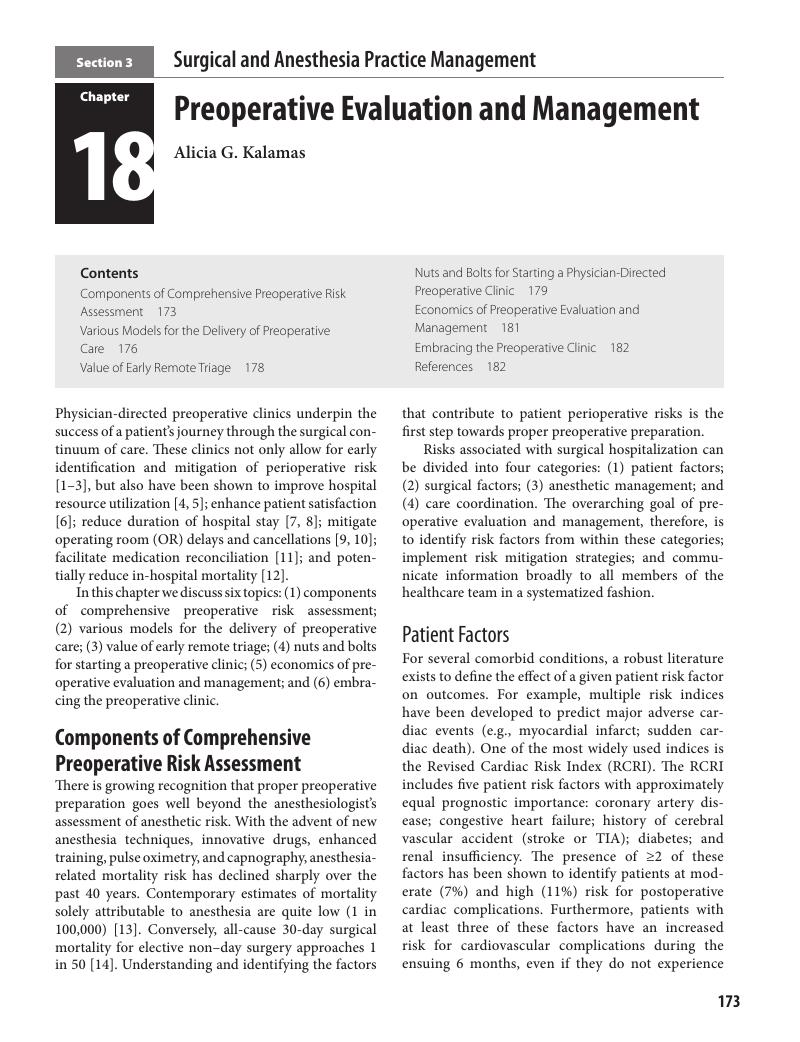Book contents
- Operating Room Leadership and Perioperative Practice Management
- Operating Room Leadership and Perioperative Practice Management
- Copyright page
- Dedication
- Contents
- Contributors
- Foreword 1
- Foreword 2
- Preface to the Second Edition
- Section 1 Leadership and Strategy
- Section 2 Economic Considerations, Efficiency, and Design
- Section 3 Surgical and Anesthesia Practice Management
- 18 Preoperative Evaluation and Management
- 19 Identifying Bottleneck Constraints to Improve the Preoperative Evaluation Process
- 20 Anesthesia Practice Management
- 21 Defining the Anesthesia Value Proposition
- 22 Anesthesia Billing, Coding, and Compliance
- 23 Postanesthesia Care Unit Management
- 24 Pain Practice Management
- 25 Office-Based Surgery Practice
- 26 The Future of Perioperative Medicine
- Section 4 Nursing
- Section 5 Safety, Standards, and Information Technology
- Index
- References
18 - Preoperative Evaluation and Management
from Section 3 - Surgical and Anesthesia Practice Management
Published online by Cambridge University Press: 16 November 2018
- Operating Room Leadership and Perioperative Practice Management
- Operating Room Leadership and Perioperative Practice Management
- Copyright page
- Dedication
- Contents
- Contributors
- Foreword 1
- Foreword 2
- Preface to the Second Edition
- Section 1 Leadership and Strategy
- Section 2 Economic Considerations, Efficiency, and Design
- Section 3 Surgical and Anesthesia Practice Management
- 18 Preoperative Evaluation and Management
- 19 Identifying Bottleneck Constraints to Improve the Preoperative Evaluation Process
- 20 Anesthesia Practice Management
- 21 Defining the Anesthesia Value Proposition
- 22 Anesthesia Billing, Coding, and Compliance
- 23 Postanesthesia Care Unit Management
- 24 Pain Practice Management
- 25 Office-Based Surgery Practice
- 26 The Future of Perioperative Medicine
- Section 4 Nursing
- Section 5 Safety, Standards, and Information Technology
- Index
- References
Summary

- Type
- Chapter
- Information
- Operating Room Leadership and Perioperative Practice Management , pp. 173 - 184Publisher: Cambridge University PressPrint publication year: 2018



